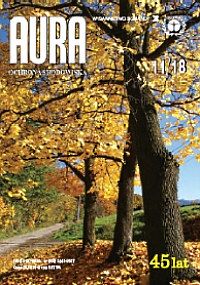
- Environmental economics in the world
The European Association of Environmental and Natural Economists (EAERE) has been in the European Union for nearly 30 years. It is slightly younger than the American association, which - first - did not have to add a geographical adjective (it was called the Association of Environmental and Resource Economists, AERE), but which is mainly limited to one continent. The European Association organizes annual scientific conferences, which every four years are convened jointly with the American association and are then called "World Congress of Environmental and Resource Economists". The last one took place in Gothenburg in 2018. EAERE conferences are the most important global forum for exchanging experiences of environmental and natural resource economists. - Amaranth - a plant with valuable chemical composition of seeds
Amaranthus, known in Poland as amaranth, is one of the oldest plants in the world. Has already been cultivated for over 4000 years BC. on both American continents. His extraordinary nutritional values were first used by the Incas, the Aztecs and the Maya. They received flour from amaranth seeds, from which they baked cakes, prepared pasties and drinks. Young shoots and leaves served as vegetables and spices. Amaranth played a very important role during pagan rites, which is why Spanish conservatists forbade its cultivation. However, the cultivation of amaranth has survived this difficult period, because it was sown only in hard-to-reach, high-lying Indian villages. The detailed chemical composition of the seeds of this plant was known only in the 1970s. Since then, there has been an increased interest in amaranth as a crop, and because of its valuable pro-health properties, it was called a "plant with a future" or "pseudo-poverty of the 21st century. - Judgment of the Tribunal of July 25, 2018 regarding the impact of the construction of a wind farm on the harrier harvester
Interpretation of the operative part of Article 6 of Council Directive 92/43 / EEC of 21 May 1992 on the conservation of natural habitats and of wild fauna and flora. - Storage of energy from RES
Lithium-ion batteries Lithium-ion batteries LIB (Lithium-Ion Battery) are containers with chemical substances that collect electricity and accumulate it in the form of chemical energy, to eventually transform it and return it in the form of electricity. The basis for storage in the lithium-ion battery is the movement of lithium ions between the anode and the cathode in the conductive electrolyte. The negative electrode is made of porous carbon (graphite) and the second one, positive, of metal oxides (lithium oxide), and the electrolyte function is filled with lithium salts dissolved in a mixture of organic solvents. - Plastic bottles and their impact on the environment and human health
Only 25% of the ingredients for the production of a plastic bottle have been researched so far in terms of potential toxic effects on human health. In addition, according to the British daily The Guardian, more than 480 billion plastic bottles were sold worldwide in 2016. Ten years earlier - 300 billion, placed next to each other would reach half the length from Earth to the Sun. According to the most up-to-date Euromonitor estimates, by 2021 their number will increase to over 583 billion. " Unfortunately, in order to issue a final opinion on the negative impact of plastic on our organisms and its potential elimination from production, a lot of research is needed.
AURA Ochrona Środowiska (AURA Environmental Protection) - full list






